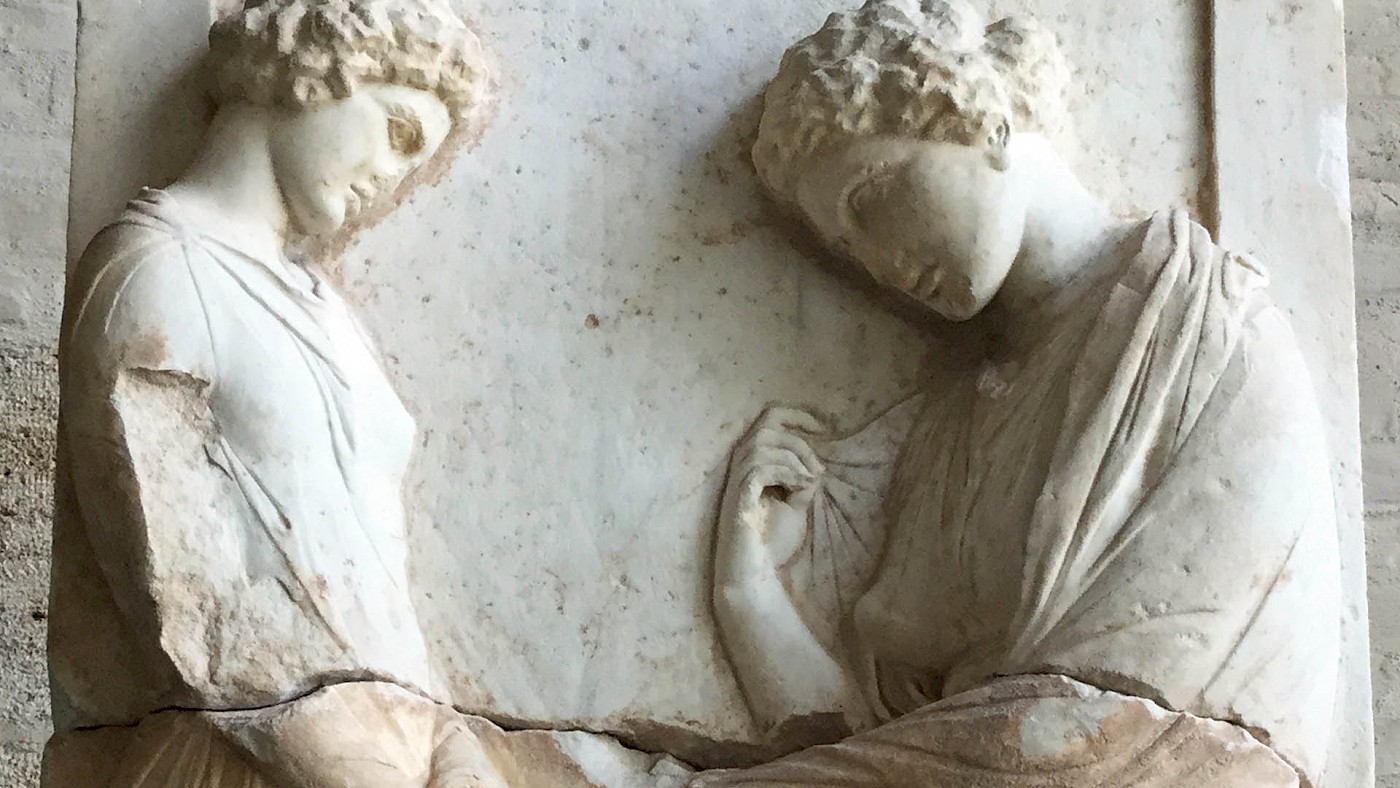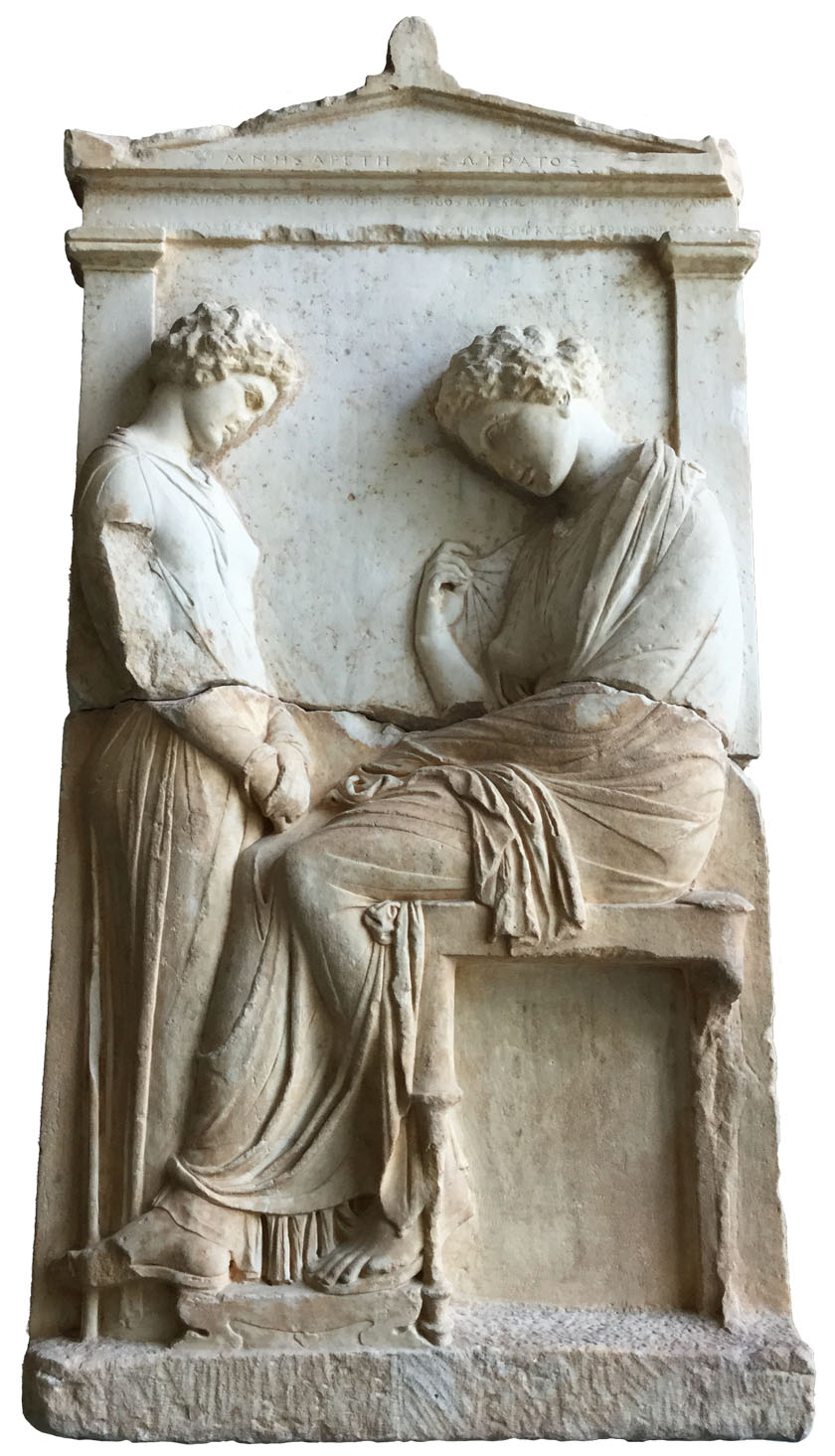The Glyptothek in Munich features a wide array of beautiful sculptures and reliefs. One of them is a sober Greek stela that was once used to mark the grave of a woman.
Most of the objects in the Glyptothek were not acquired in a very systematic way, but this piece is said to have been found at Velanideza in Attica. The context isn’t known, but it has been dated on stylistic grounds to around 380 BC.
The stela is 1.64m tall and features two figures. Let’s take a closer look.
A marble grave stela
The larger figure of the two figures in the scene is seated and depicts the deceased; she’s holding part of her garment or, more likely, a veil in her right hand, as if she’s about to cover her head with it (as a sign of piety). The chair and the small foot stool, as well as, of course, the stela itself, make clear that she belonged to the upper echelons of society.
The figure to the right is larger, and therefore clearly the main subject of the scene. One of the reasons that she’s depicted seated is to make the difference in height with the girl on the left not too awkward. But the girl is clearly intended to be a more minor figure. She’s presumably not a child, but a servant girl or, because she has short hair, perhaps more likely a slave.
Both figures bow their heads as a sign of respect for the deceased. The woman’s lower right leg overlaps the legs of the standing girl. In art, the legs of figures often overlap when the artists wants to make clear that the two are both part of the same scene: we see this most clearly, for example, in vase-paintings between fighting warriors, who usually each have one leg very much ahead of the other.
The two female figures are seated in front of a stylized building façade. It has inscriptions that provide a wealth of information. The horizontal geison just underneath the triangular pediment identifies the deceased as “Mnesarete, daughter of Socrates”.
Her father isn’t the famous philosopher – whose children, incidentally, were all male – but another Socrates, about whom we know nothing. Fortunately, we are better informed about his daughter.
Further inscriptions
On the epistyle directly beneath the pediment are further inscriptions. The museum translates the text as follows:
She left behind her husband and brothers and sisters, and sorrow for her mother, as well as her child and her unfading reputation for great virtue. Persephone’s chamber surrounds Mnesarete here (in the grave), who achieved the peak of all virtue.
Considering that she is survived by her parents, as well as her brothers and sisters, she was probably fairly young when she died: most Greek girls, after all, married when they were fourteen to sixteen years old. “Persephone’s chamber” is a euphemism for the underworld.
There is the mention of a single child and it’s perhaps not too much of a stretch to imagine that she died, as so many did before the advance of modern medicine, in childbirth. This would also fit with the emphatic statement that she died after achieving “the peak of all virtue”, namely to have produced offspring.
Gravestones like this would have once lined the roads that lead into cities and towns, so that all those who passed by were introduced to those who had once roamed among the living. No doubt some travellers would have paused for a moment and imagined what kind of lives the dead had led.
So let’s pause for a moment, and grieve for Mnesarete.

